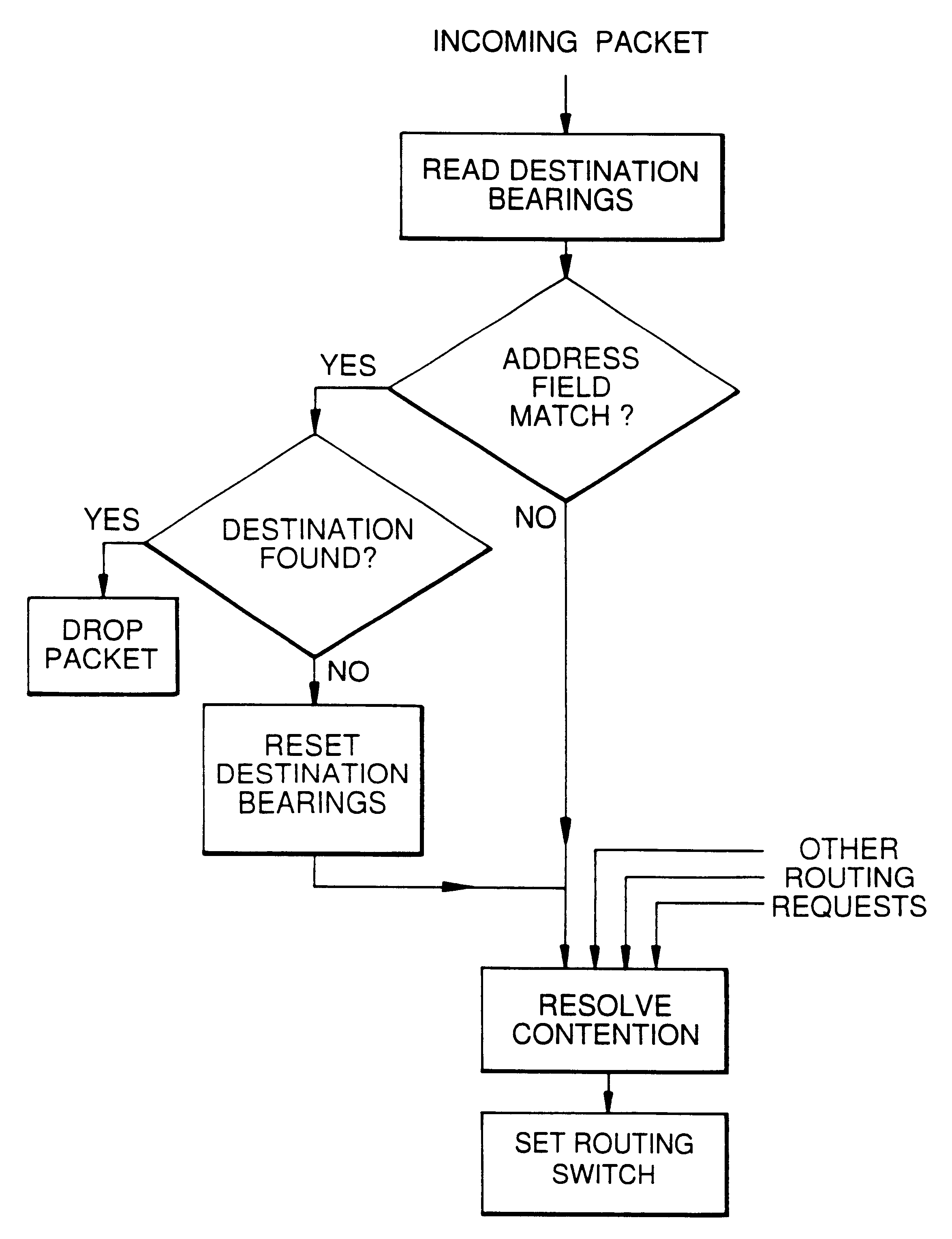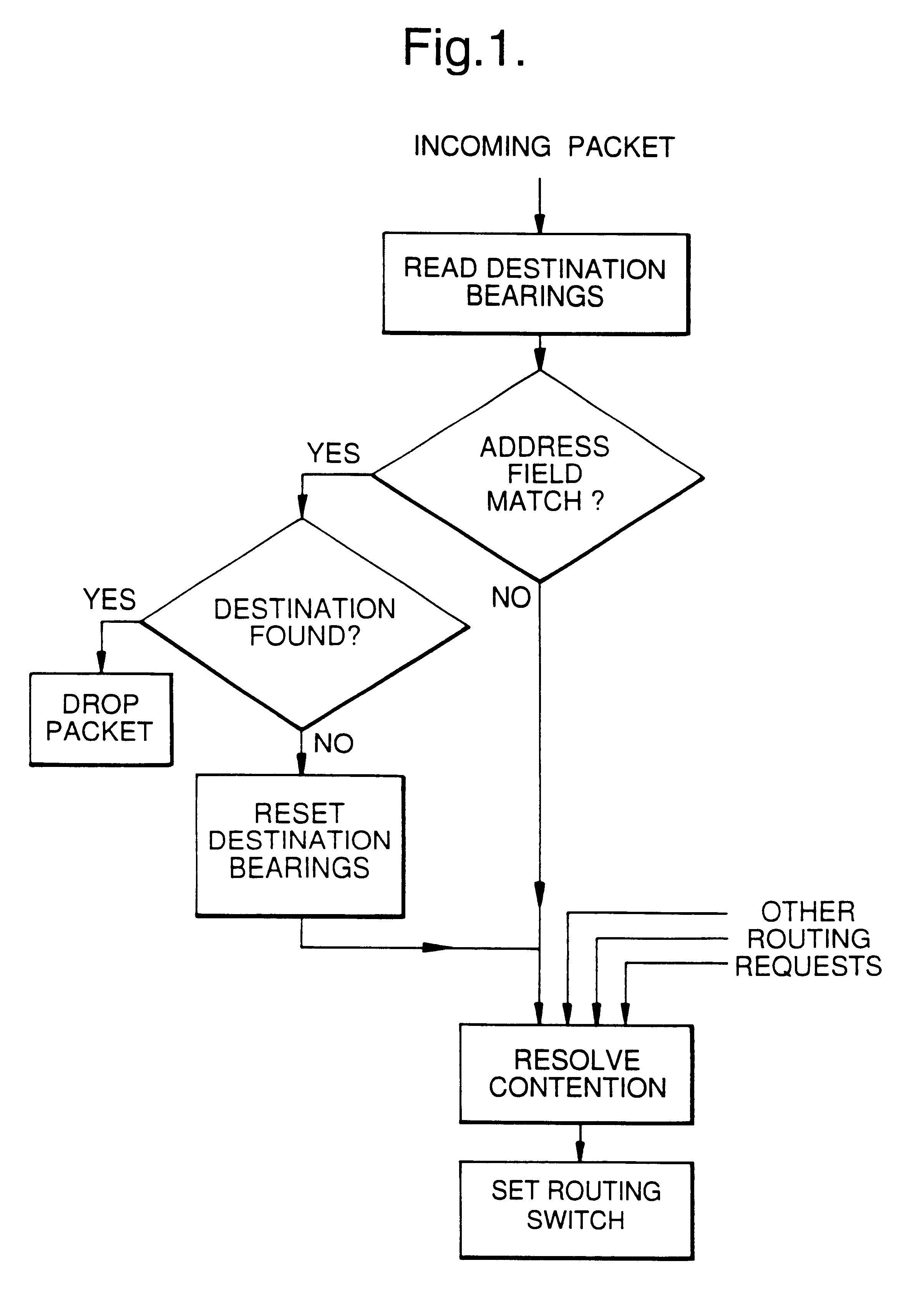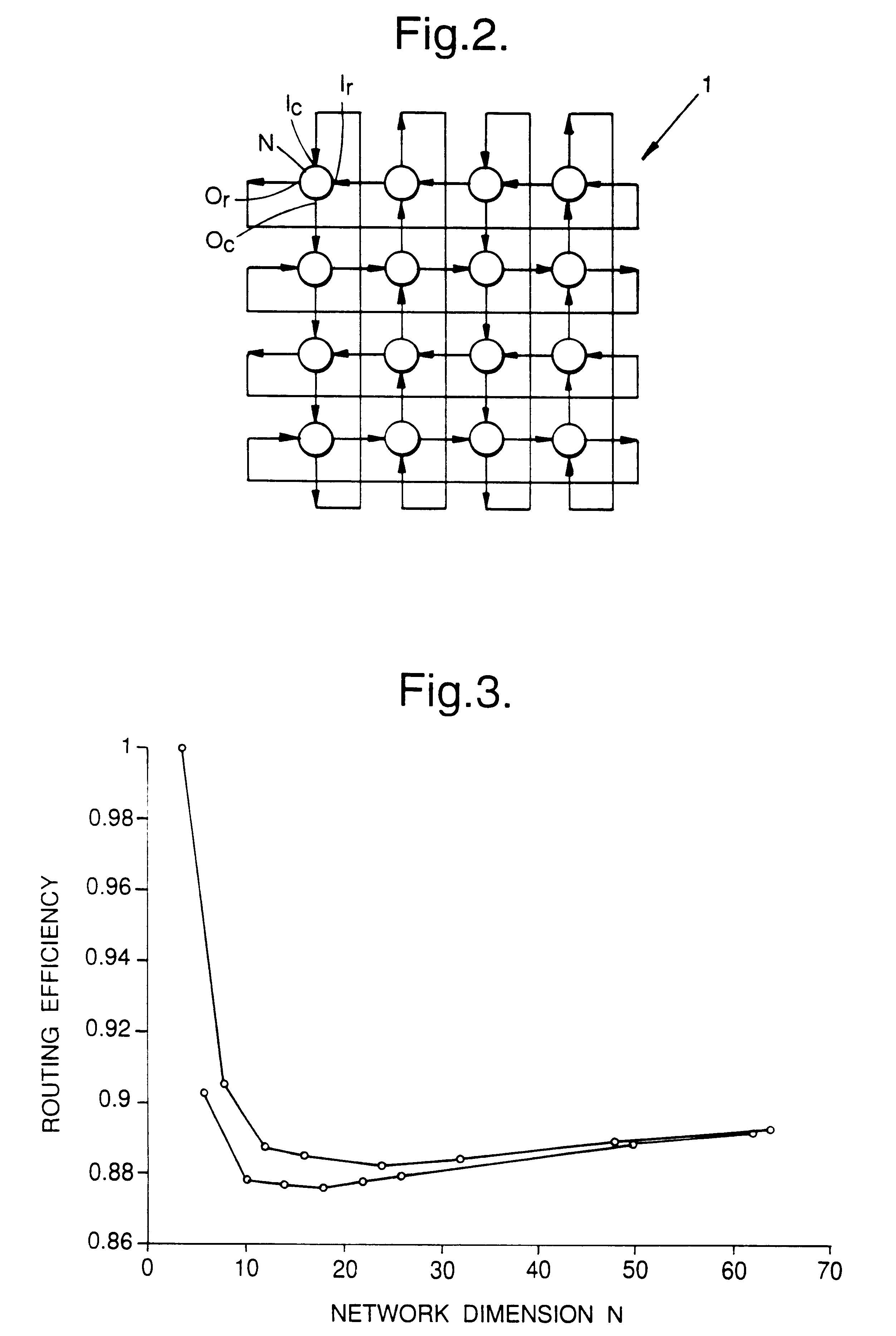Dead reckoning routing of packet data within a network of nodes having generally regular topology
a network and topology technology, applied in data switching networks, instruments, digital computer details, etc., can solve the problems of increasing the length of the queue, becoming a very severe constraint, and more difficult to satisfy the stability criterion
- Summary
- Abstract
- Description
- Claims
- Application Information
AI Technical Summary
Benefits of technology
Problems solved by technology
Method used
Image
Examples
Embodiment Construction
As shown in FIG. 2, one example an optical network 1 in accordance with this invention comprises a plurality of nodes N interconnected in a regular mesh pattern. In the example shown in FIG. 2, a Manhattan Street Network (MS-Net) topology is used. This is a two-connected, regular network with unidirectional links. There is an even number of rows and columns with two links arriving and two links leaving each node N. Logically, the links form a grid on the surface of a torus, with links in adjacent rows or columns travelling in opposite directions. FIG. 2 shows a 16-node (4.times.4) MS-Net.
FIG. 4 shows the structure of an individual node N. It incorporates a switch 2 which is set to route an incoming packet either to the node's row output O.sub.r, to the column output O.sub.c or to the host local to the node. This host may, for example, be one of a number of processors connected to respective nodes and forming in combination a multi-processor parallel processing computer system. The s...
PUM
 Login to View More
Login to View More Abstract
Description
Claims
Application Information
 Login to View More
Login to View More - R&D
- Intellectual Property
- Life Sciences
- Materials
- Tech Scout
- Unparalleled Data Quality
- Higher Quality Content
- 60% Fewer Hallucinations
Browse by: Latest US Patents, China's latest patents, Technical Efficacy Thesaurus, Application Domain, Technology Topic, Popular Technical Reports.
© 2025 PatSnap. All rights reserved.Legal|Privacy policy|Modern Slavery Act Transparency Statement|Sitemap|About US| Contact US: help@patsnap.com



